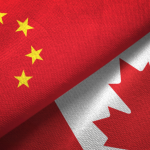Navigating the Complexities of Digital Connectivity: Practical Strategies for Protecting Your Personal Life and Ensuring Quality Time Outside Work Hours Amid a 24/7 Digital World
In today’s hyper-connected era, the boundaries between professional responsibilities and personal life have become increasingly blurred. Constant notifications, work emails after hours, and instant messaging can make it challenging to disconnect and enjoy quality time outside of work. While digital tools have vastly improved efficiency and communication, they also pose significant risks to our mental health and overall well-being when not managed effectively.
The key to maintaining a healthy work–life balance in the digital age lies in adopting practical strategies to navigate these complexities. This involves establishing clear boundaries, cultivating healthy digital habits, and harnessing technology in a way that supports—not hinders—personal well-being.
Establishing Boundaries and Cultivating Healthy Digital Habits
1. Set Clear Work Hours and Communicate Them
One of the most effective ways to protect your personal life is to define specific work hours. Inform colleagues and supervisors about your availability and stick to these boundaries. For example, avoid checking work emails or responding to messages outside designated hours. By setting this precedent, you signal to others that your personal time is non-negotiable, which can foster a culture of respect for boundaries.
2. Use Technology to Your Advantage
Leverage features such as "Do Not Disturb" modes, email scheduling, and app restrictions. Many smartphones allow you to schedule silent periods during evenings or weekends, helping you resist the temptation to check work-related notifications. Additionally, some email platforms enable you to set auto-responders outside of working hours, informing senders that you’ll reply during business hours.
3. Practice Digital Detox Regularly
Designate specific times to unplug completely from digital devices—such as during family dinners, weekends, or before bedtime. Engaging in activities like reading, exercising, or pursuing hobbies without digital interruptions can rejuvenate your mind and reinforce healthy boundaries. Consistent digital detoxes help prevent burnout and foster a more balanced lifestyle.
4. Cultivate Mindful Digital Usage
Be intentional about your screen time. Before opening an app or checking a notification, pause and ask whether it’s necessary. Practicing mindfulness helps reduce impulsive digital engagement and keeps you focused on what truly matters outside work.
5. Create Physical and Mental Boundaries
Designate a dedicated workspace at home that is separate from your personal living areas. When you finish your workday, physically leave this space to help mentally disengage from work tasks. This separation reinforces the boundary between professional and personal domains.
Practical Strategies for a Balanced Digital Life
1. Establish Digital “Boundaries” with Colleagues and Family
Set expectations about your responsiveness. For instance, notify team members that emails sent after hours won’t be answered until the next business day. Similarly, communicate to family members that work emails will not be checked during shared time, ensuring both groups understand and respect your boundaries.
2. Prioritize Quality Over Quantity
In the digital realm, quantity of communication isn’t always indicative of quality. Aim for meaningful interactions rather than constant connectivity. Engage in conversations that enrich your relationships rather than superficial exchanges that drain your energy.
3. Schedule Personal Time and Treat It As Non-negotiable
Just as you schedule meetings and deadlines, block out time for personal pursuits. Whether it’s exercise, hobbies, or simply resting, protecting this time ensures it’s not overshadowed by work demands or digital distractions.
4. Be Mindful of Social Media Use
Social media can often lead to feelings of inadequacy or FOMO (Fear of Missing Out). Limit your time on these platforms and curate your feeds to focus on content that uplifts and relaxes you. Remember, it’s okay to take breaks or unfollow accounts that contribute to stress.
5. Reflect Regularly on Your Digital Habits
Set aside time periodically to evaluate how your digital habits impact your work–life balance. Ask yourself questions like: Am I spending enough time with loved ones? Do I feel rested and energized? Adjust your habits accordingly to align better with your personal well-being.
Conclusion
Maintaining work–life balance in the digital age requires conscious effort and strategic planning. As technology continues to evolve, the challenge lies in mastering its use to serve our well-being rather than undermine it. By establishing clear boundaries, cultivating mindful digital habits, and prioritizing personal time, you can create a sustainable rhythm that allows you to thrive professionally and personally.
Remember, technology is a tool that, when used intentionally, can enhance your life rather than complicate it. Embrace the power of boundaries and mindfulness to navigate the complexities of digital connectivity, ensuring that your personal life remains vibrant, fulfilling, and protected amidst the 24/7 digital world.








